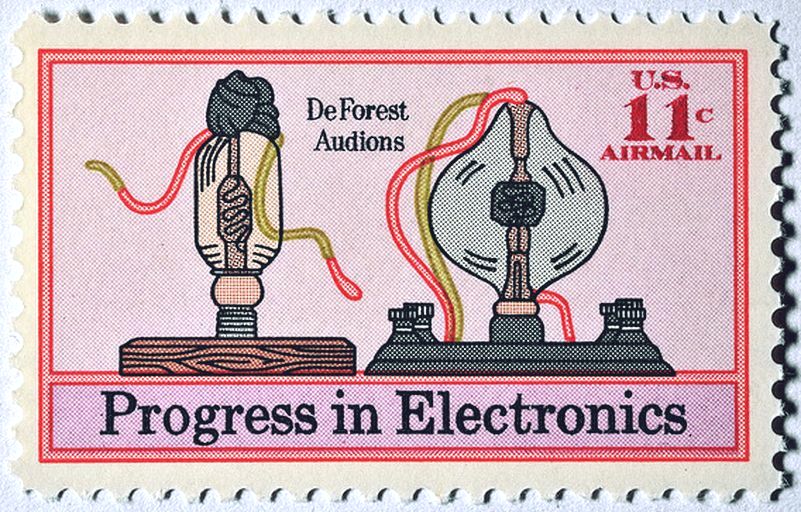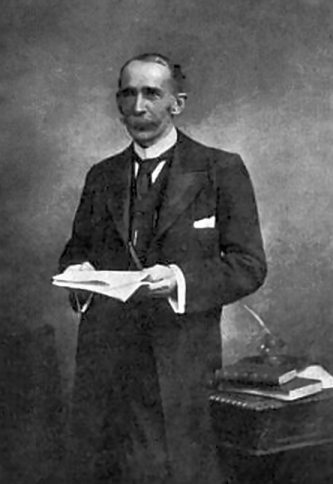|
Valve Amplifier
A valve amplifier or tube amplifier is a type of electronic amplifier that uses vacuum tubes to increase the amplitude or power of a Signal (information theory), signal. Low to medium power valve amplifiers for frequencies below the microwaves were largely replaced by Solid state (electronics), solid state amplifiers in the 1960s and 1970s. Valve amplifiers can be used for applications such as guitar amplifiers, satellite transponders such as DirecTV and GPS, high quality stereo amplifiers, military applications (such as radar) and very high power radio and UHF television transmitters. History Origins Until the invention of the transistor in 1947, most practical high-frequency electronic amplifiers were made using thermionic valves. The simplest valve (named diode because it had two electrodes) was invented by John Ambrose Fleming while working for the Marconi Company in London in 1904. The diode conducted electricity in one direction only and was used as a radio detector a ... [...More Info...] [...Related Items...] OR: [Wikipedia] [Google] [Baidu] |
Mono Tube
Mono may refer to: Biology * Infectious mononucleosis, "the kissing disease" * Monocyte, a type of leukocyte (white blood cell) * Monodactylidae, members of which are referred to as monos Technology and computing * Mono (audio), single-channel sound reproduction * Mono (software), a software framework Music Performers * Mono (British band), an electronic band * Mono (Japanese band), an instrumental band * MONO, Vietnamese male singer and Sơn Tùng M-TP's younger brother * Miky Mono, former member of Mono Inc., a German gothic rock band * Richard Targett and the Monos, a side-project to The Trudy Albums * Mono (Alpha Wolf album), ''Mono'' (Alpha Wolf album) or the title song, 2017 * Mono (Fury in the Slaughterhouse album), ''Mono'' (Fury in the Slaughterhouse album), 1993 * Mono (K.Flay album), ''Mono'' (K.Flay album), 2023 * Mono (The Icarus Line album), ''Mono'' (The Icarus Line album), 2001 * Mono (Lena Katina album), ''Mono'' (Lena Katina album) or the title song, 2019 ... [...More Info...] [...Related Items...] OR: [Wikipedia] [Google] [Baidu] |
Cat's-whisker Detector
A crystal detector is an obsolete electronic component used in some early 20th century radio receivers. It consists of a piece of crystalline mineral that rectifies an alternating current radio signal. It was employed as a detector ( demodulator) to extract the audio modulation signal from the modulated carrier, to produce the sound in the earphones. It was the first type of semiconductor diode, and one of the first semiconductor electronic devices. The most common type was the so-called cat's whisker detector, which consisted of a piece of crystalline mineral, usually galena ( lead sulfide), with a fine wire touching its surface. Greenleaf Whittier Pickard, ''Detector for Wireless Telegraphy and Telephony'', filed: 21 June 1911, granted: 21 July 1914 The "asymmetric conduction" of electric current across electrical contacts between a crystal and a metal was discovered in 1874 by Karl Ferdinand Braun. Crystals were first used as radio wave detectors in 1894 by Jagad ... [...More Info...] [...Related Items...] OR: [Wikipedia] [Google] [Baidu] |
Anode
An anode usually is an electrode of a polarized electrical device through which conventional current enters the device. This contrasts with a cathode, which is usually an electrode of the device through which conventional current leaves the device. A common mnemonic is ACID, for "anode current into device". The direction of conventional current (the flow of positive charges) in a circuit is opposite to the direction of electron flow, so (negatively charged) electrons flow from the anode of a galvanic cell, into an outside or external circuit connected to the cell. For example, the end of a household battery marked with a "+" is the cathode (while discharging). In both a galvanic cell and an electrolytic cell, the anode is the electrode at which the oxidation reaction occurs. In a galvanic cell the anode is the wire or plate having excess negative charge as a result of the oxidation reaction. In an electrolytic cell, the anode is the wire or plate upon which excess positive charge ... [...More Info...] [...Related Items...] OR: [Wikipedia] [Google] [Baidu] |
Cathode
A cathode is the electrode from which a conventional current leaves a polarized electrical device such as a lead-acid battery. This definition can be recalled by using the mnemonic ''CCD'' for ''Cathode Current Departs''. Conventional current describes the direction in which positive charges move. Electrons, which are the carriers of current in most electrical systems, have a negative electrical charge, so the movement of electrons is ''opposite'' to that of the conventional current flow: this means that electrons flow ''into'' the device's cathode from the external circuit. For example, the end of a household battery marked with a + (plus) is the cathode. The electrode through which conventional current flows the other way, into the device, is termed an anode. Charge flow Conventional current flows from cathode to anode outside the cell or device (with electrons moving in the opposite direction), regardless of the cell or device type and operating mode. Cathode polarity ... [...More Info...] [...Related Items...] OR: [Wikipedia] [Google] [Baidu] |
Audion
The Audion was an electronic detecting or amplifying vacuum tube invented by American electrical engineer Lee de Forest as a diode in 1906.De Forest patented a number of variations of his detector tubes starting in 1906. The patent that most clearly covers the Audion is , Space Telegraphy', filed January 29, 1907, issued February 18, 1908 The link is to a reprint of the paper in the ''Scientific American Supplement'', Nos. 1665 and 1666, November 30, 1907 and December 7, 1907, p.348-350 and 354-356. Non-paywalled reprint of the DeForest presentation at the October 26, 1906 New York meeting of the AIEE. Text version available at thsite. Improved, it was patented as the first triode in 1908, consisting of an evacuated glass tube containing three electrodes: a heated filament (the cathode, made out of tantalum), a grid, and a plate (the anode). It is important in the history of technology because it was the first widely used electronic device that could amplify. A low power sign ... [...More Info...] [...Related Items...] OR: [Wikipedia] [Google] [Baidu] |
Triode
A triode is an electronic amplifier, amplifying vacuum tube (or ''thermionic valve'' in British English) consisting of three electrodes inside an evacuated glass envelope: a heated Electrical filament, filament or cathode, a control grid, grid, and a Plate electrode, plate (anode). Developed from Lee De Forest's 1906 Audion, a partial vacuum tube that added a grid electrode to the thermionic diode (Fleming valve), the triode was the first practical electronic amplifier and the ancestor of other types of vacuum tubes such as the tetrode and pentode. Its invention helped make amplified radio technology and long-distance telephony possible. Triodes were widely used in consumer electronics devices such as radios and televisions until the 1970s, when transistors replaced them. Today, their main remaining use is in high-power Radio frequency, RF amplifiers in Transmitter, radio transmitters and industrial RF heating devices. In recent years there has been a resurgence in demand for ... [...More Info...] [...Related Items...] OR: [Wikipedia] [Google] [Baidu] |
Rectifier
A rectifier is an electrical device that converts alternating current (AC), which periodically reverses direction, to direct current (DC), which flows in only one direction. The process is known as ''rectification'', since it "straightens" the direction of current. Physically, rectifiers take a number of forms, including Vacuum tube#Diodes, vacuum tube diodes, wet chemical cells, mercury-arc valves, stacks of copper and selenium rectifier, selenium oxide plates, Diode#Semiconductor diodes, semiconductor diodes, silicon-controlled rectifiers and other silicon-based semiconductor switches. Historically, even synchronous electromechanical switches and motor-generator sets have been used. Early radio receivers, called crystal radios, used a "Crystal detector#Cat whisker detector, cat's whisker" of fine wire pressing on a crystal of galena (lead sulfide) to serve as a point-contact rectifier or "crystal detector". Rectifiers have many uses, but are often found serving as component ... [...More Info...] [...Related Items...] OR: [Wikipedia] [Google] [Baidu] |
Electricity
Electricity is the set of physical phenomena associated with the presence and motion of matter possessing an electric charge. Electricity is related to magnetism, both being part of the phenomenon of electromagnetism, as described by Maxwell's equations. Common phenomena are related to electricity, including lightning, static electricity, electric heating, electric discharges and many others. The presence of either a positive or negative electric charge produces an electric field. The motion of electric charges is an electric current and produces a magnetic field. In most applications, Coulomb's law determines the force acting on an electric charge. Electric potential is the Work (physics), work done to move an electric charge from one point to another within an electric field, typically measured in volts. Electricity plays a central role in many modern technologies, serving in electric power where electric current is used to energise equipment, and in electronics dealing w ... [...More Info...] [...Related Items...] OR: [Wikipedia] [Google] [Baidu] |
Marconi Company
The Marconi Company was a British telecommunications and engineering company founded by Italian inventor Guglielmo Marconi in 1897 which was a pioneer of wireless long distance communication and mass media broadcasting, eventually becoming one of the UK's most successful manufacturing companies. Its roots were in the Wireless Telegraph & Signal Company, which underwent several changes in name after mergers and acquisitions. In 1999, its defence equipment manufacturing division, Marconi Electronic Systems, merged with British Aerospace (BAe) to form BAE Systems. In 2006, financial difficulties led to the collapse of the remaining company, with the bulk of the business acquired by the Swedish telecommunications company, Ericsson. History Naming history * 1897–1900: The Wireless Telegraph & Signal Company * 1900–1963: Marconi's Wireless Telegraph Company * 1963–1987: Marconi Company Ltd * 1987–1998: GEC-Marconi Ltd * 1998–1999: Marconi Electronic Systems, Marconi Elec ... [...More Info...] [...Related Items...] OR: [Wikipedia] [Google] [Baidu] |
John Ambrose Fleming
Sir John Ambrose Fleming (29 November 1849 – 18 April 1945) was an English electrical engineer who invented the vacuum tube, designed the radio transmitter with which the first transatlantic radio transmission was made, and also established the right-hand rule used in physics. He was born in Lancaster, Lancashire and was baptised on 11 February 1850, the eldest of seven children of James Fleming DD (died 1879), a Congregational minister, and his wife Mary Ann. A devout Christian, he once preached at St Martin-in-the-Fields in London on evidence for the resurrection. In 1932, he and Douglas Dewar and Bernard Acworth helped establish the Evolution Protest Movement. Fleming bequeathed much of his estate to Christian charities, especially those for the poor. He was a noted photographer, painted watercolours, and enjoyed climbing the Alps. Early years Ambrose Fleming was born in Lancaster and educated at Lancaster Royal Grammar School, University College School, London, an ... [...More Info...] [...Related Items...] OR: [Wikipedia] [Google] [Baidu] |
Electrode
An electrode is an electrical conductor used to make contact with a nonmetallic part of a circuit (e.g. a semiconductor, an electrolyte, a vacuum or a gas). In electrochemical cells, electrodes are essential parts that can consist of a variety of materials (chemicals) depending on the type of cell. An electrode may be called either a cathode or anode according to the direction of the electric current, unrelated to the potential difference between electrodes. Michael Faraday coined the term "" in 1833; the word recalls the Greek ἤλεκτρον (, "amber") and ὁδός (, "path, way"). The electrophore, invented by Johan Wilcke in 1762, was an early version of an electrode used to study static electricity. Anode and cathode in electrochemical cells Electrodes are an essential part of any battery. The first electrochemical battery was devised by Alessandro Volta and was aptly named the Voltaic cell. This battery consisted of a stack of copper and zinc electrodes ... [...More Info...] [...Related Items...] OR: [Wikipedia] [Google] [Baidu] |







